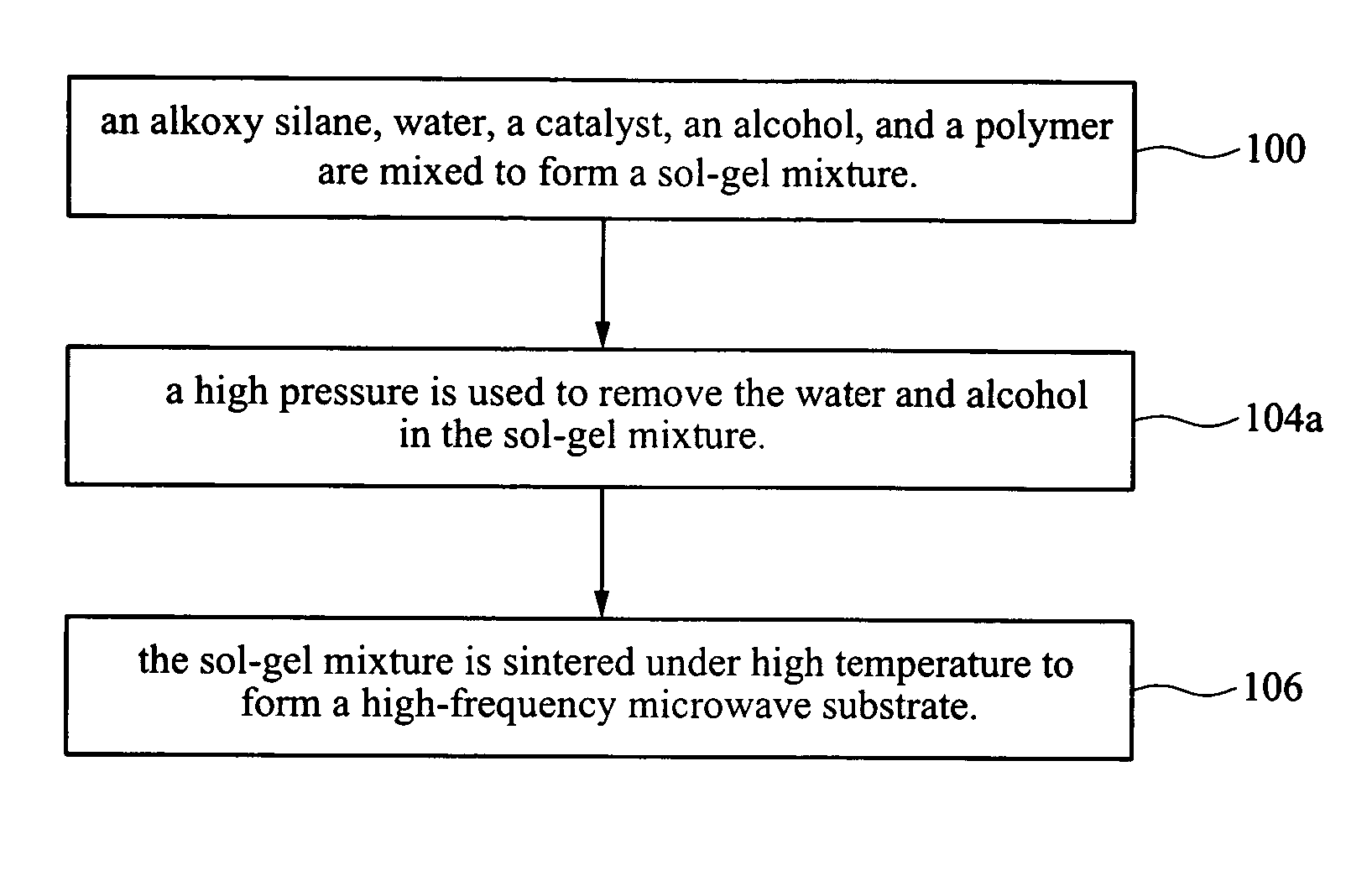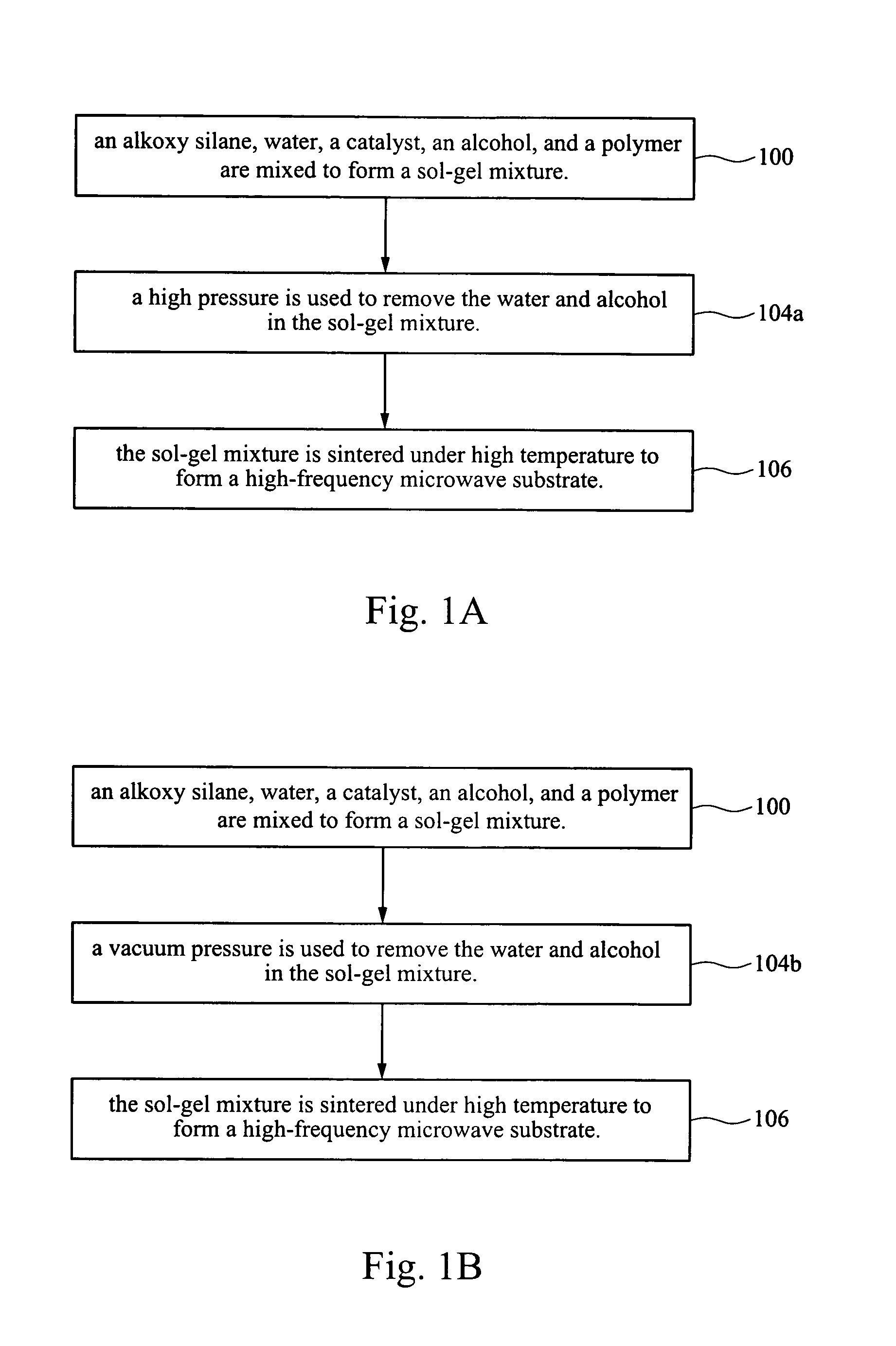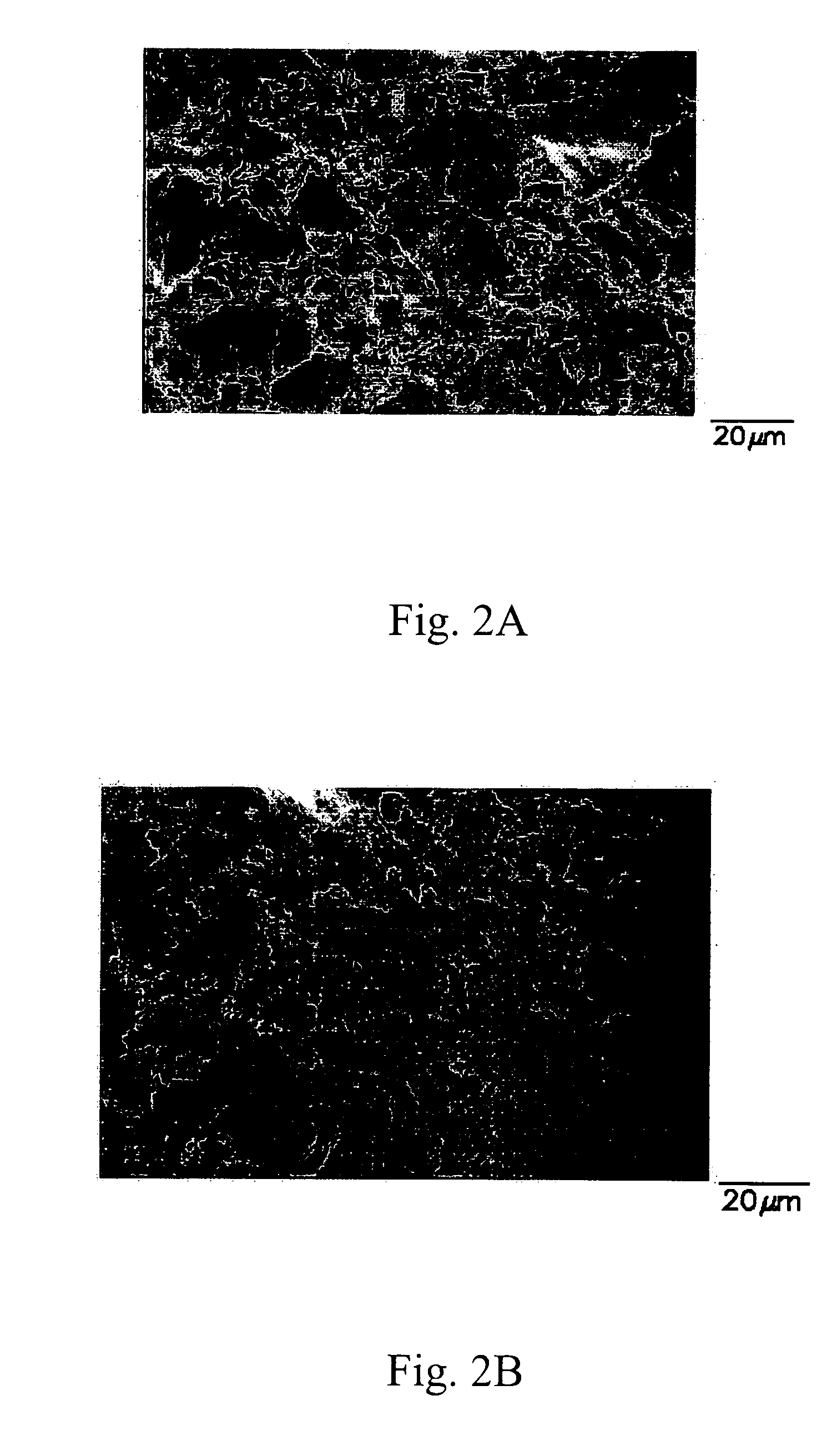Method for manufacturing a microwave substrate
- Summary
- Abstract
- Description
- Claims
- Application Information
AI Technical Summary
Benefits of technology
Problems solved by technology
Method used
Image
Examples
embodiment 1
[0024] A fixed amount of TEOS is dissolved in the ethanol of appropriate amount. A nitric acid used as a catalyst is added to adjust the pH value of the solution to 2, thereby catalyzing a sol-gel reaction. The TEOS in the solution is reacted at room temperature to form a sol-gel solution. Thereafter, the PTFE emulsion and deionized water are added into the sol-gel solution and mixed uniformly to form a sol-gel mixture. Next, the sol-gel mixture is heated to 70° C. and reacted continuously at 70° C. for 6 hours. The ratio of water to TEOS is 1.1 in the aforementioned mixing process.
[0025] The sol-gel mixture is then stirred in a high speed milling machine, and then screened through a 150-mesh screen, which has a mesh diameter of 104 μm so as to ensure that there is no non-uniformly mixed or un-reacted mass particles existing in the sol-gel mixture. Thereafter, the sol-gel mixture is compressed under 100 Mp pressure to remove the water and alcohol therein, and simultaneously to comp...
embodiment 2
[0027] Embodiment 2 is carried out with the same steps of embodiment 1, except that the pressure used for removing water and alcohol is decreased to 50 Mpa. The temperature for sintering the sol-gel mixture is kept at 340° C. Consequently, the ceramic-PTFE microwave substrate of the second preferred embodiment of the present invention is obtained.
embodiment 3
[0028] Embodiment 3 is carried out with the same steps of embodiment 1, except that the temperature for sintering the sol-gel mixture is increased to 360° C. The ceramic-PTFE microwave substrate of the third preferred embodiment of the present invention is thus obtained.
PUM
| Property | Measurement | Unit |
|---|---|---|
| Temperature | aaaaa | aaaaa |
| Temperature | aaaaa | aaaaa |
| Pressure | aaaaa | aaaaa |
Abstract
Description
Claims
Application Information
 Login to View More
Login to View More - R&D
- Intellectual Property
- Life Sciences
- Materials
- Tech Scout
- Unparalleled Data Quality
- Higher Quality Content
- 60% Fewer Hallucinations
Browse by: Latest US Patents, China's latest patents, Technical Efficacy Thesaurus, Application Domain, Technology Topic, Popular Technical Reports.
© 2025 PatSnap. All rights reserved.Legal|Privacy policy|Modern Slavery Act Transparency Statement|Sitemap|About US| Contact US: help@patsnap.com



